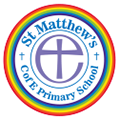EYFS Curriculum and Learning
Curriculum and Learning in the EYFS
The Early Years Foundation Stage (EYFS) is the curriculum that the government sets for all early years providers (0-5 years) to make sure that, 'all children learn and develop well and are kept healthy and safe' (Department for Education). There are seventeen early learning goals to be aimed for by the end of the Reception year in school.
The Framework is divided into 3 sections;
Characteristics of Learning
Three prime areas of learning
Four specific areas of learning
We support our children to be independent, articulate and creative learners through providing exciting experiences which have real meaning for them. We believe our curriculum is enhacning and covers all of the experiences we want children to have alongside supporting the development of their relationships with children and adults.
We support our children to develop their characteristics of effective learning through a mixture of adult led and child led activities.
Playing and exploring, which is about finding out and exploring, playing with what they know and being willing to ‘have a go’.
Active Learning, which is about being involved and concentrating, persevering and enjoying achieving, what they set out to do.
Creating and thinking critically, which is about having their own ideas, making links and choosing ways to do things.
The Early Years curriculum is split into 7 key sections:
Prime Areas
These are the 3 areas of learning which form the foundations for learning
1) Personal, social and emotional development
This area of learning is about making making relationships and getting along with other children and adults, having confidence and self-awareness, and being able to manage their feelings and behaviour.
To support and teach this explicitly we use 1Decision Rainbow drops and Think Equal as well as high quality interactions throughout the day to support regulation.
2) Physical development
This area of learning is about developing large and small movements in a variety of ways, having good control and co-ordination, handling different tools and equipment well. It also covers health and self-care, looking at ways to keep healthy and safe.
3) Communication and language
This area of learning is about developing good listening and attention skills, to have good understanding and also speak and express themselves clearly.
Specific Areas
These are the four areas through which the prime areas are "strengthened and applied"
1) Literacy
This area of learning is about stories, rhymes, books and reading, and also mark making/writing.
To support our teaching of literacy we use Monster Phonics, Steps to Read and Drawing club
2) Mathematics
This area of learning looks at numbers and counting, along with exploring shapes in the environment and making patterns. To ensure good number sense and confidence in mathematics from this early stage we use the National Centre for Excellence in Teaching Mathematics (NCETM) Mastering Number.
3) Understanding the world
This area of learning is about people and communities and helps children understand about the world they live in.
4) Expressive arts and design
This area of learning develops different forms of expression, exploring music, dance and song, encouraging children to be creative in all respects. It also focuses on media and materials and imaginative/pretend play.
We believe children are learning all of the time and we know through their play children are thinking deeply and learning about themselves, the world and others.
 St Matthew's CofE Primary School
St Matthew's CofE Primary School